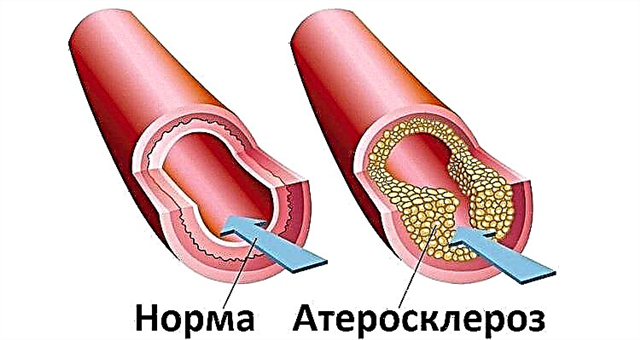Smoking is becoming a factor in the development of many diseases. Tobacco smoke has an equally negative effect on all body tissues. Smoking and hypertension are especially closely related. By eliminating this habit, the risk of complications is significantly reduced and the course of the disease is facilitated.
The effect of smoking on blood pressure
 The components of tobacco smoke always change the pressure level. This is due to its effect on the vascular wall. Such a condition without the timely initiation of treatment significantly increases the risk of complications.
The components of tobacco smoke always change the pressure level. This is due to its effect on the vascular wall. Such a condition without the timely initiation of treatment significantly increases the risk of complications.
Most often, when smoking, it is precisely the increase in pressure that is noted. Indicators usually increase by 20-30 mm. rt. Art. The mechanism of such changes is associated with the effects of nicotine. After its entry into the body, an instant vasospasm appears. This is manifested by their narrowing, which makes it difficult for blood to move through the lumen. Such changes provoke an increase in pressure.
In addition to narrowing the vascular wall, nicotine leads to a sharp rush of adrenaline. This leads to the appearance of symptoms of impaired heart function and coronary artery disease.
Such mechanisms appear due to self-regulation of pressure. The body has baroreceptors. Their function is to respond to any change in pressure, which then send a signal to the brain. Depending on the situation, baroreceptors increase or decrease it. If a person with hypertension smokes for a long time, then over time, their activity under the influence of nicotine deteriorates. As a result, pressure can no longer be controlled by one's own resources and it does not change for a short time. Most often, such a bad habit is accompanied by the appearance of a hypertensive crisis in the absence of help, or requires the appointment of drugs for constant use.
Patients after smoking with increased blood pressure experience the following symptoms:
- headache;
- dizziness;
- nausea;
- sometimes there is vomiting;
- noise in ears;
- darkening or flies before the eyes;
- imbalance;
- the appearance of trembling in the hands;
- weakness in the legs;
- sometimes fainting.
With a short smoking history, the pressure rises for 20-30 minutes, and then returns to normal. Over time, the elasticity and tone of the vascular wall is lost, and this condition is referred to as irreversible. Patients have high cholesterol levels, and the kidneys cannot remove excess fluid from the body.
As a result, the volume of blood circulating in the vascular bed increases, and all this leads to an increase in pressure. To cope with such a task will be possible only with the help of constant intake of antihypertensive drugs. Therefore, smoking is closely related to hypertension and patients should understand that they will be able to cope with high blood pressure after changing their attitude towards life.
A person who smokes increases the risk of complications and chronic hypertension. Some patients find it very difficult to stabilize the pressure.
Therefore, in addition to quitting smoking tobacco, the following recommendations should be observed:
- Eat a diet with the exception of fatty, fried and carbohydrate-rich foods.
- Limit salt intake to no more than 5-15 grams per day.
- Start exercising to avoid complications on the kidneys and cardiovascular system.
- Try to avoid stressful situations.
- Try to get enough rest after exercise.
- Sleep should be adequate (6-8 hours a day, depending on the needs of the body).
Most likely, you will not be able to quit smoking right away. If the patient understands that his blood pressure will become more controlled after giving up the bad habit, then you can gradually reduce the number of cigarettes smoked. This will enable the body to adapt to the decrease in nicotine concentration. Over time, there will be practically no craving for cigarettes, which will reduce the risk of complications.
 For many people, smoking tobacco increases blood pressure. Others, on the contrary, complain about low rates, which is associated with a hereditary predisposition or the presence of vegetative vascular dystonia. Therefore, smoking and arterial hypertension in this situation do not have a common relationship.
For many people, smoking tobacco increases blood pressure. Others, on the contrary, complain about low rates, which is associated with a hereditary predisposition or the presence of vegetative vascular dystonia. Therefore, smoking and arterial hypertension in this situation do not have a common relationship.
The tone of the vascular wall in such patients is reduced, and the effect of nicotine leads to even greater relaxation. In hypotonic patients, blood pressure is usually kept within 100/70, and smoking increases the likelihood of a drop in these values. In this situation, the main role is given to norepinephrine. It is thrown out when you smoke a cigarette. Deterioration in well-being is manifested by the following symptoms:
- pallor of the skin;
- cold extremities;
- the onset of severe weakness, in which the patient has a desire to lie down;
- dizziness;
- severe headache;
- darkening in the eyes;
- drowsiness;
- fainting;
- palpitations;
- slowing down of mental and physical activity.
For arterial hypotension (a decrease in pressure below 100/70 mm Hg), deterioration of well-being is characteristic in the form of weakness, dizziness, darkening in the eyes during smoking.
People with low scores should adhere to certain guidelines, which include:
- Correctly organize your daily routine with periods of rest, physical activity and sleep.
- Limit fried, salty foods.
- Take vitamin complexes after a doctor's prescription.
- If you cannot quit smoking, then this should not be done indoors, but in the fresh air. This is necessary to provide the lungs with oxygen.
- When hypotension worsens, the smoker should drink a cup of coffee, which will slightly increase the pressure.
Smoking with hypertension is unacceptable, but it is also impossible to give it up abruptly, with great experience. The body is used to receiving the necessary dose of nicotine, and without it, paradoxical phenomena occur. After smoking, such patients begin to cough, quickly gain excess weight, which aggravates the course of the disease.
Dangers
Tobacco smoke gives an imaginary sensation of pleasure, and apart from negative consequences it can provide nothing. Smoking and blood pressure are closely related to each other. It is believed that smokers start to have high blood pressure much earlier than those who do not have this bad habit. They have hypertensive crises more often, and there is a high risk of severe damage to internal organs. The pathology that becomes the result of smoking experience includes:
- atrial arrhythmia;
- ischemic heart disease;
- myocardial infarction;
- atherosclerosis;
- stroke;
- thrombosis;
The nicotine contained in smoke when smoking disrupts the conduction of impulses through the heart muscle. This process negatively affects the contractility of the atria, they begin to perform this function in a chaotic manner. This condition poses a great threat to the health and life of the patient.
All new portions of nicotine obtained during smoking lead to the appearance of lesions of the heart muscle. As a result, such tissues do not have time to recover, and the area of disturbances becomes wider. There comes a point when the heart loses the ability to do its job as usual.
With arterial hypertension, the risk of developing myocardial infarction in a smoker increases. Pathology is observed in persons who have a long experience of nicotine addiction, at the age of less than 30 years. In addition to heart diseases, disorders develop in the lumen of blood vessels. Smoking is considered a risk factor for atherosclerosis. Nicotine promotes the formation of plaque in the lumen of the vessels, which closes it and impedes blood flow.
An additional danger of tobacco smoke when smoking is when vein thrombosis occurs. At any time, a plaque can come off and clog the vascular lumen, which is unfavorable for a person's life.  In addition to the fact that smoking increases blood pressure, there is a risk of damage to the kidney system. She acts as one of the targets that suffers under the influence of bad habits.
In addition to the fact that smoking increases blood pressure, there is a risk of damage to the kidney system. She acts as one of the targets that suffers under the influence of bad habits.
Smoking and the work of internal organs
The mouth cavity takes the first blow to itself while smoking tobacco. Smoke and its constituents reduce the activity of the enzymes contained in it. This leads to mucosal dysbiosis. In addition, the gums, tongue, teeth suffer, which leads to the appearance of diseases and frequent relapses.
In the stomach, there is a change in the acidity of the digestive juice and a violation of blood flow. This condition is manifested by symptoms of gastritis and increased blood pressure. Gastric bleeding becomes a frequent occurrence, and the likelihood of oncology is also high.
After the oral cavity, tobacco smoke enters the respiratory tract and lungs when smoked. Harmful substances settle on the epithelium, which eventually fails to cope with its task. At this stage, a cough joins and high blood pressure is noted. It is most often disturbed in the morning, when phlegm accumulates overnight. As a result, such people often suffer from diseases of the respiratory system, and not just high blood pressure. Among them, the likelihood of lung cancer is noted.
With prolonged smoking, the heart muscle begins to fail to cope with its main function. Therefore, there are pains, shortness of breath, which is associated with oxygen starvation of tissues. In addition, the smoker's blood becomes more viscous, which not only impairs the delivery of nutrients to the organs, but also increases the risk of blood clots.
At the moment the poison enters the body, vascular spasm occurs in the kidneys. Therefore, the release of hormones - adrenaline and norepinephrine - increases, which significantly increases the load on the urinary system. At the same time, after smoking a cigarette, there is a decrease in the filtration capacity of the glomeruli. This increases the risk of developing kidney failure. As a result, blood pressure will rise and worsen the function of organs. If you try to get rid of nicotine addiction, then the likelihood of kidney damage is significantly reduced.
It is important to remember that by gradually reducing the number of cigarettes smoked per day, the chance of avoiding the appearance of early hypertension and other diseases of internal organs increases. It takes about 1.5 years to recover from a bad habit. Long-term rehabilitation ensures the restoration of cardiac tissue, blood vessels and other organs after prolonged intoxication.



